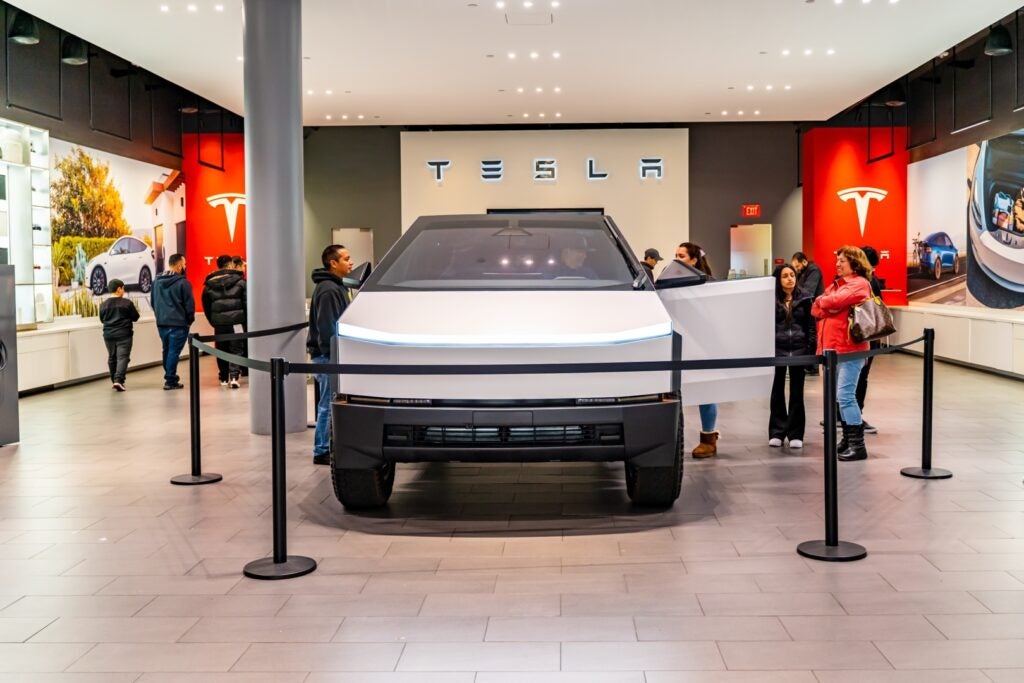Tesla’s Cybertruck Production Cuts: A Sign of Trouble Ahead?
Tesla has reportedly slashed Cybertruck production targets and reassigned workers from its Austin Gigafactory amid softening demand for the angular electric pickup. According to internal sources, the company reduced its 2024 production goal by 20%—from 25,000 to 20,000 units quarterly—while shifting staff to Model Y lines. The move raises questions about Tesla’s growth strategy as competitors flood the EV market.
Behind the Numbers: Cybertruck’s Rocky Road
Industry analysts note the Cybertruck faces unique challenges despite its headline-grabbing design. Tesla delivered just 2,820 units in Q1 2024, falling short of Elon Musk’s initial projection of 5,000 weekly builds. Meanwhile, Ford’s F-150 Lightning outsold the Cybertruck 4:1 during the same period, with 11,558 units moved.
- Price sensitivity: Base models start at $60,990—42% higher than 2019’s promised $39,900
- Manufacturing complexity: Stainless steel exoskeleton requires specialized tooling
- Utility concerns: 34% smaller bed than Ford Lightning according to MotorTrend measurements
Expert Perspectives on Tesla’s Strategic Shift
“This isn’t just about one vehicle—it’s a canary in the coal mine for Tesla’s demand problem,” says Dr. Lila Chen, automotive analyst at Bernstein Research. “When your halo product gets downgraded less than six months after launch, it suggests either production hell or consumer skepticism about EVs at premium price points.”
Countering this view, Wedbush Securities’ Dan Ives maintains optimism: “Tesla is pragmatically reallocating resources to higher-volume models. The Cybertruck was always a niche product—the real battle will be fought with the $25,000 compact car they’re developing.”
Market Headwinds Reshape EV Landscape
The production cuts coincide with broader electric vehicle market cooling. Cox Automotive reports US EV inventory rose to 97 days’ supply in April—nearly double the 54-day industry average. Key factors influencing demand:
- High interest rates increasing loan costs for $60k+ vehicles
- Charging infrastructure gaps in rural markets
- Political uncertainty around federal EV incentives
Tesla’s total deliveries dropped 8.5% year-over-year in Q1 2024, marking its first decline since pandemic-era shutdowns. The company now holds 51% US EV market share—still dominant but down from 62% in 2023.
Cybertruck’s Ripple Effect on Tesla’s Brand
Brand perception experts warn the production cuts could dent Tesla’s innovation halo. “The Cybertruck symbolized Musk’s ‘anything is possible’ ethos,” notes Kellogg School marketing professor Derek Rucker. “Walking back expectations invites comparisons to other delayed or underwhelming products like the Roadster or Solar Roof.”
However, Tesla enthusiasts point to silver linings. Owner forums highlight the truck’s industry-leading 2.6-second 0-60 mph acceleration and 500-mile range in Cyberbeast trim. Early adopters praise its armored glass and towing capacity, though some report quality control issues with panel gaps and software bugs.
What Comes Next for Tesla and the EV Sector?
All eyes now turn to Tesla’s Q2 earnings call on July 23, where Musk must address:
- Revised 2024 delivery targets across all models
- Updates on next-gen platform development
- Plans to leverage Cybertruck’s tech in future vehicles
Meanwhile, competitors are pouncing. Rivian just secured $1.5 billion in new funding to accelerate R2 SUV production, while GM plans seven new Ultium-based EVs by 2025. Even traditional truck buyers have more options, with hybrid F-150s outselling all-electric pickups combined.
For consumers considering a Cybertruck, analysts suggest waiting for potential price adjustments or incentive packages later this year. As the EV market enters its next phase, Tesla’s ability to balance innovation with execution will determine whether it remains the industry pacesetter or cedes ground to hungrier rivals.
See more Business Focus Insider Team

